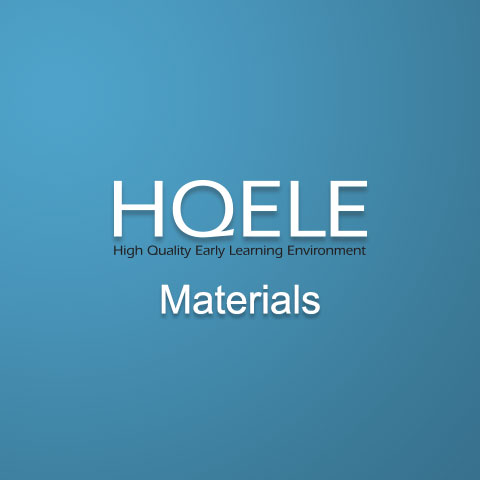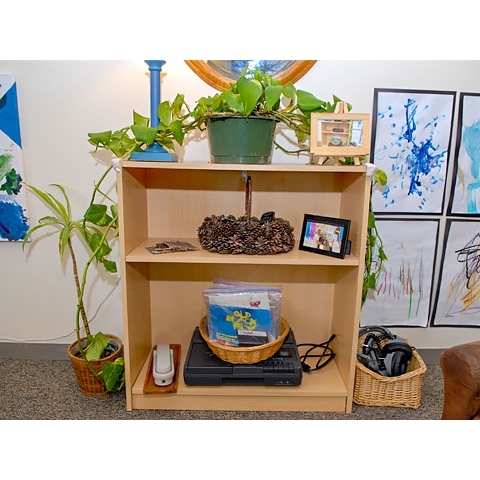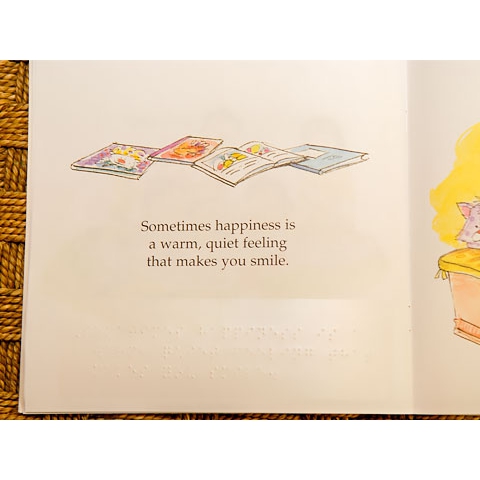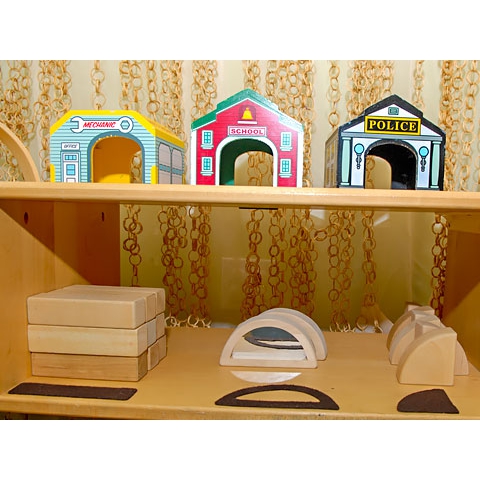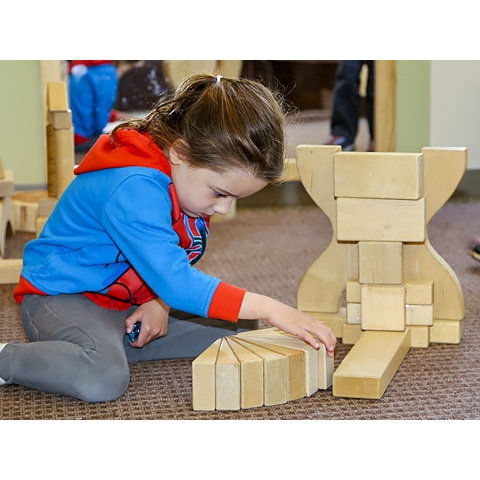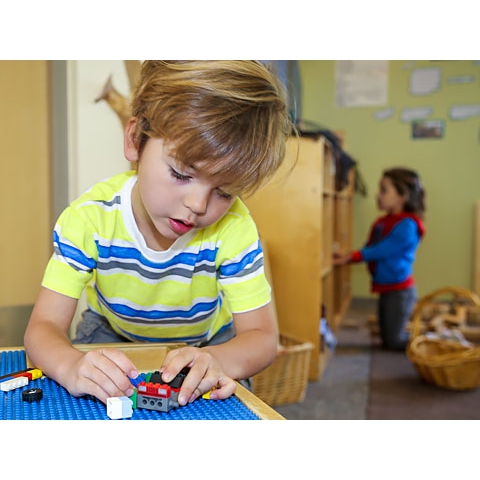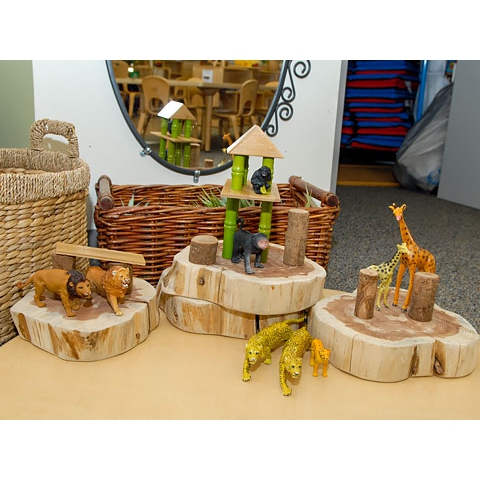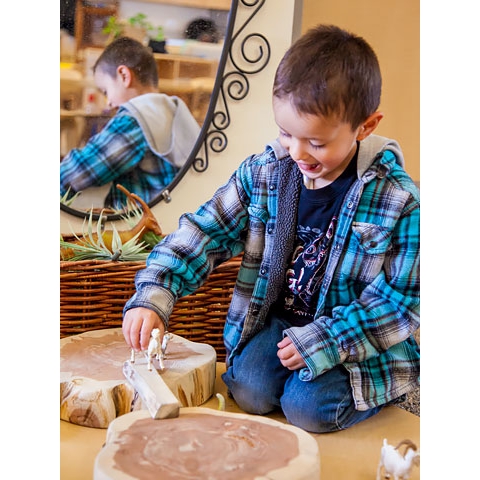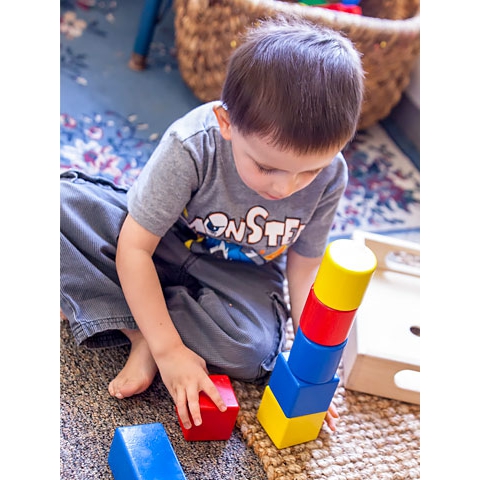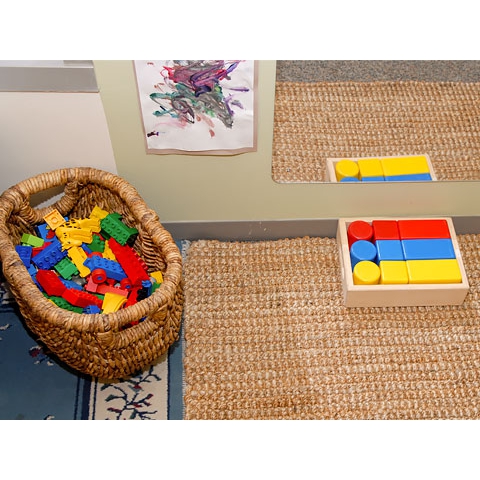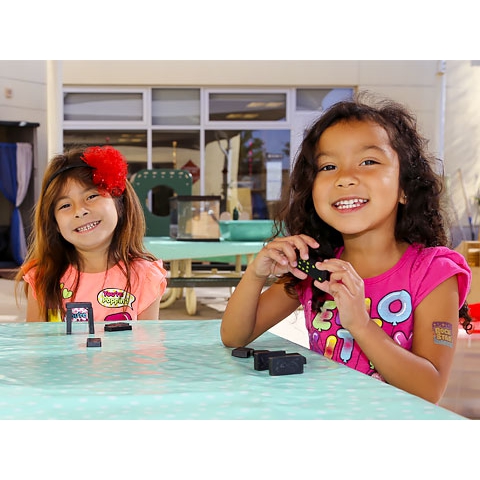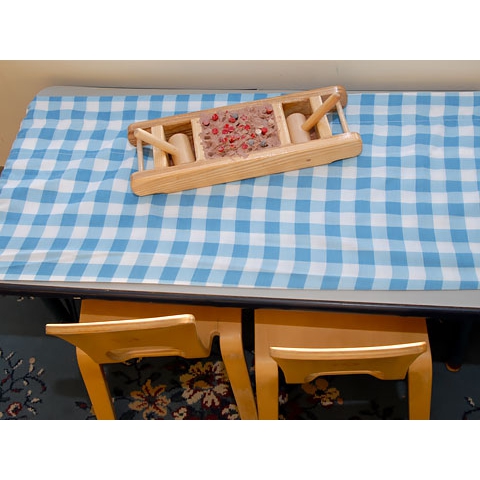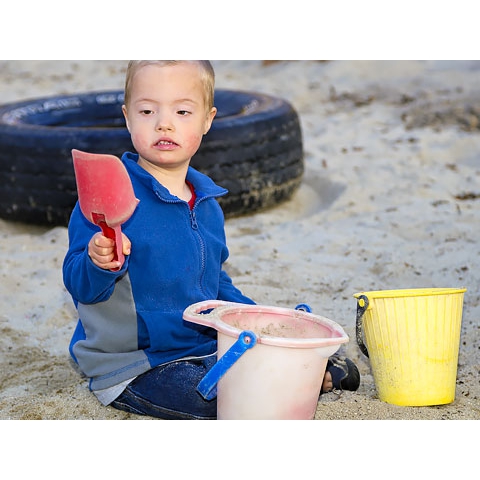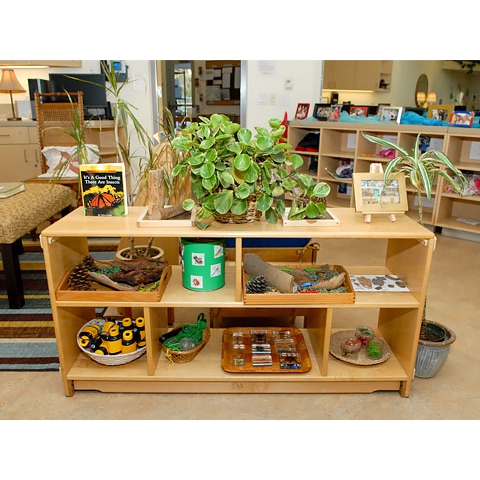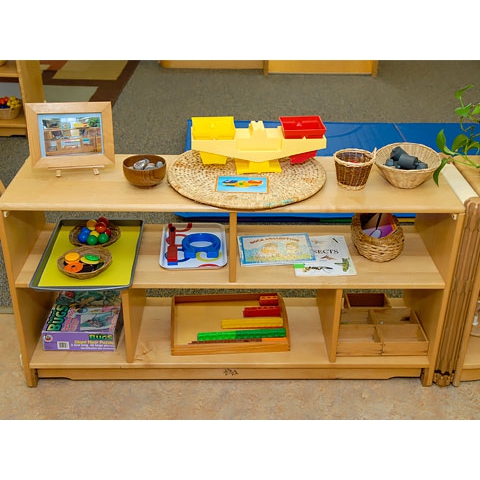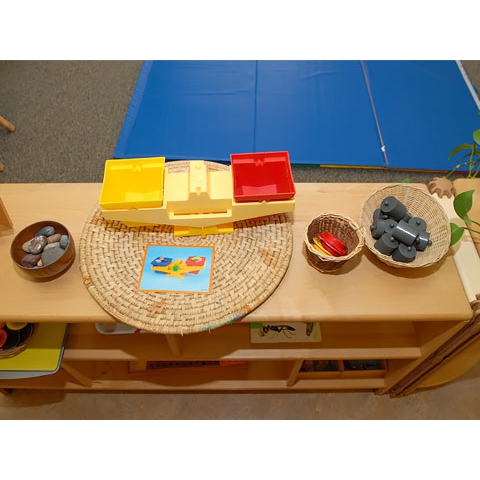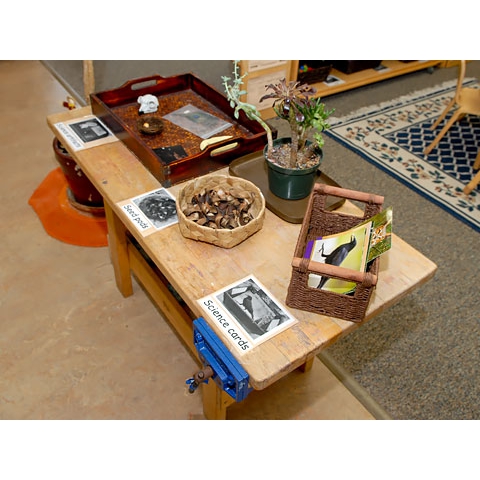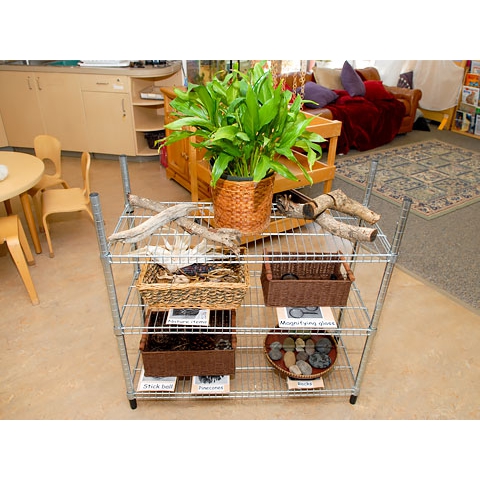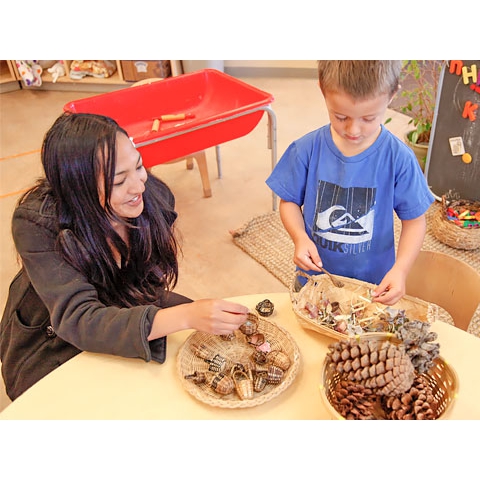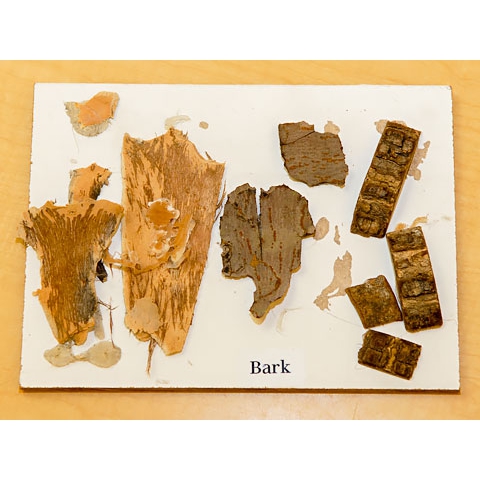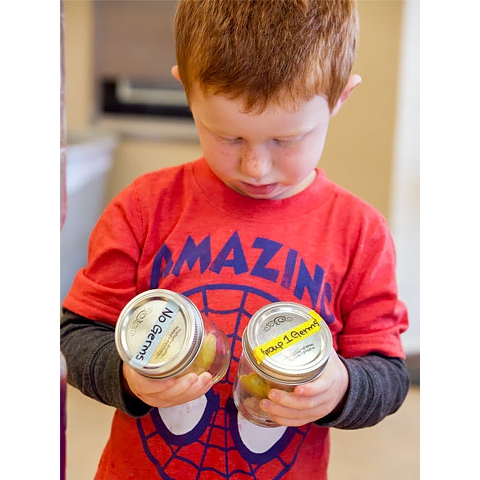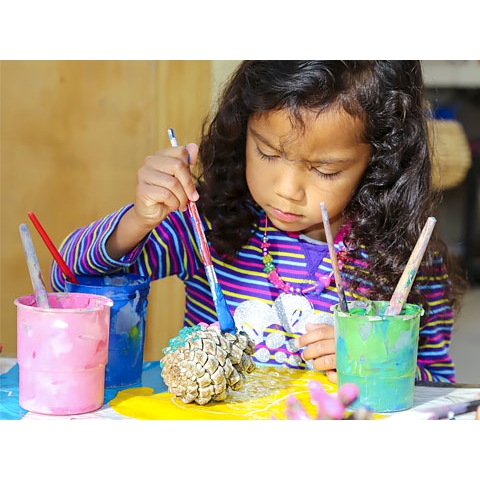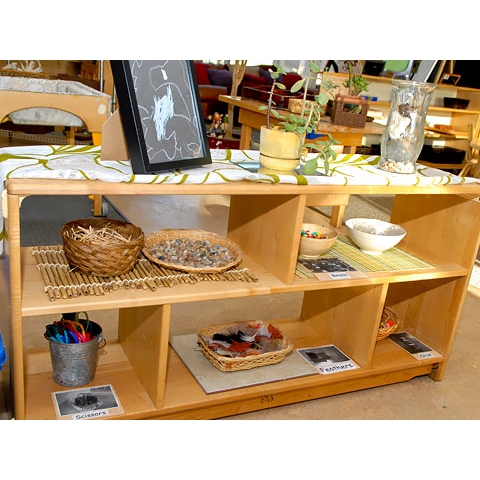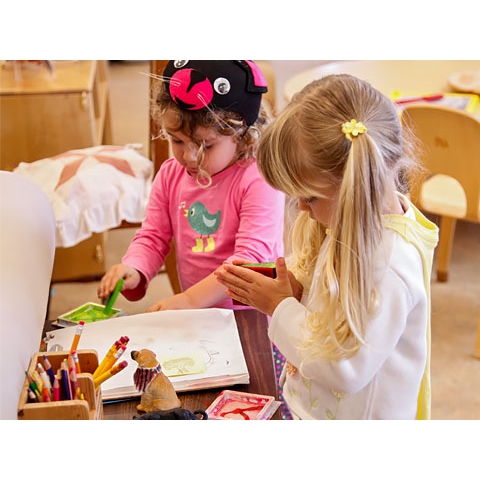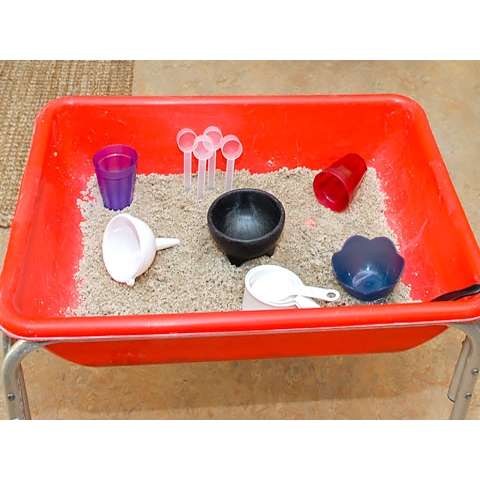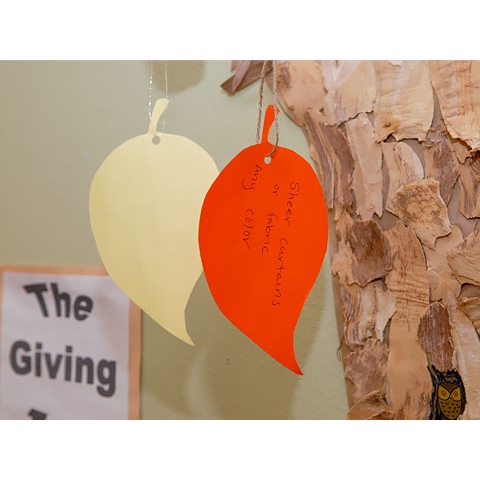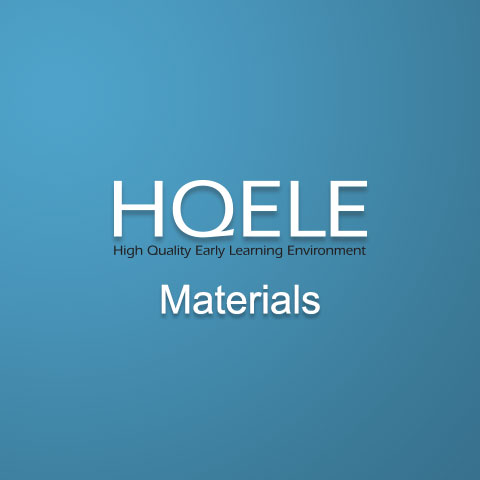Key Element: Materials
The choice of what materials to include in the early childhood classroom reflects the beliefs that teachers hold about children’s capabilities as learners and their own role in provoking and supporting children’s interests. These materials ought to go beyond the traditional items associated with preschool programming (crayons, markers, puzzles, books, dress-up clothes, etc.) and also include collections of interesting objects (scraps of paper and cardboard, bits of plastic and fabric, twine and ribbon, buttons, bottle caps, and natural materials such as twigs, leaves, bark, shells and rocks). Children themselves and their families can be invited to offer their own valued materials to the classroom. In turn, teachers can provide the spaces and means of organizing, sorting, classifying and distributing these materials within their classroom in support of a wide range of projects and investigations.
The hot spots represented on the panoramic tour represent a sample of this particular Key Element. Explore the Video Clips in this section to learn more.
Video Clips
- Materials Overview - Examples of using a variety of engaging materials within a classroom
- Adaptations - Director/ Teachers share examples of material adaptations
- Desired Results Developmental Profile (DRDP) - How assessment tool is used in classroom and curriculum planning
- Activity Sample: Crates & Boards
Slideshow*
Materials: Real-life instruments and tools, genuine artifacts and natural materials that can be used in a variety of ways (including wood, stone, glass, fabric and wire).
Download/Reference/Related Resources
PDFs
- The "Whys" Have It! Why to Include Loose Parts on the Playground By Jim Dempsey PhD & Dr. Eric Strickland PhD
 (101k PDF)
(101k PDF) - Effects of Play Equipment and Loose Parts on Preschool Children's Outdoor Play Behavior: An Observational Study and Design Intervention by Maxwell, Mitchell and Evans
 (1.1MB PDF)
(1.1MB PDF) - Environments that Engage and Inspire the Young Learner
 (864k PDF)
(864k PDF) - Technology and Interactive Media as Tools in Early Childhood Programs Serving Children from Birth through Age 8 NAEYC/F.Rogers Position Statement
 (321k PDF)
(321k PDF)
Books
- Learning Together with Young Children—A Curriculum Framework for Reflective Teachers by Deb Curtis & Margie Carter
- Beautiful Stuff: Learning with Found Materials by Cathy Topal and Lella Gandini (1999). Davis Publications, Inc.
- Assistive Technology Solutions in Minutes Book II: Ordinary Items, Extraordinary Solutions by Therese Willkomm
Websites
- Adapting Materials and Activities
- Early Childhood Natural Materials
- Reggio-Inspiration in Early Childhood Classrooms
- Lets Play! - Universal Design
Web Blog
Many strategies and elements included throughout this site are applicable to all students and their families. Additional information/resources related to students with disabilities and family engagement can be found within the HQELE Online Tool Overview and MiraCosta Child Development Center Overview (Download/Reference Sections).
*These slideshow images are being used with explicit permission from MiraCosta College and their families for the sole purpose of the HQELE professional development online tool. All images remain the property of the California Department of Education, Special Education Division, SEEDS Project, A Special Project of the Sacramento County Office of Education and may not be published, exhibited, broadcast, posted on the Internet, sold, traded, shared, or used in any way not specified without the written permission of CDE- SEEDS Project.

